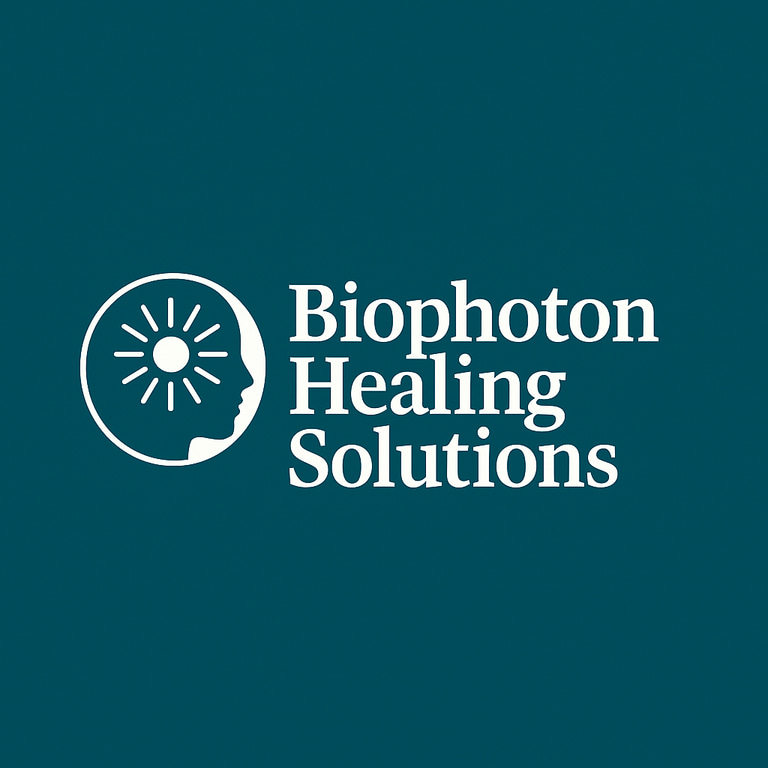How Can BioPhotons be “Regenerated”? – Methods to Enhance or Restore Biophoton Levels
The phrase “regenerate biophotons” can be interpreted as boosting the body’s biophoton emission or restoring the coherence of its biophoton field. If one views biophotons as an indicator of vitality or cellular communication, then enhancing biophoton output/coherence could correlate with improved health. Several methodologies, both lifestyle-based and technological, are proposed to increase or “recharge” the body’s biophoton energy:
Healthy Nutrition and Sunlight: An intriguing finding by Popp was that fresh, organic foods emitted more coherent biophotons, whereas heavily processed “junk” foods emitted almost none. The idea is that living foods rich in stored sunlight energy can supply the body with biophotonic energy. Thus, one way to regenerate your biophoton levels is via a high-quality diet – essentially ingesting the “light” captured by plants. Likewise, regular exposure to natural sunlight may synchronize and stimulate our biophoton emissions (sunlight entrains our circadian rhythms and boosts antioxidant levels, potentially balancing oxidative processes). One study noted differences in a person’s UPE after exposure to sunlight versus artificial light, hinting that full-spectrum sunlight might better support the body’s natural light emissionssciencedirect.com. In short, living in harmony with nature – good diet, sunlight, and circadian sleep cycles – could maintain and restore the body’s biophoton output.
Stress Reduction and Healing Practices: Stress and illness are associated with disordered biophoton emission (loss of coherence and rhythmicity). Practices that reduce oxidative stress or inflammation (such as meditation, adequate sleep, or antioxidant supplementation) might normalize biophoton emission patterns. For example, during deep relaxation or therapeutic modalities like acupuncture, some researchers have observed changes in UPE, suggesting these interventions can influence the body’s energetic state. Maintaining a strong antioxidant system (through diet or supplements) can also prevent excessive random biophoton release by keeping ROS in check.
Photo biomodulation (Low-Level Light Therapy): As mentioned, shining certain wavelengths of light on the body can stimulate cells. Red and near-infrared light therapy (via low-power lasers or LED pads) is already used clinically for wound healing, pain relief, and skin rejuvenation. By delivering photons into tissues, photo biomodulation kick-starts mitochondrial activity and ATP production, which in turn can lead to more robust cellular function and potentially more regulated biophoton emission. One review found that photo biomodulation increased stem cell proliferation and triggered signaling pathways that promote tissue repairpubmed.ncbi.nlm.nih.govpubmed.ncbi.nlm.nih.gov. In essence, this is an external way to “fuel” the biophoton-generating machinery of our cells.
Biophoton Generator Devices: Purpose-built biophoton therapy devices are a direct method to regenerate biophotons in the body. The Tesla BioHealing StemRenew™ system, for instance, involves placing four biophoton generator units around a person to create an “amplified field of biophoton energy” in a room. Users simply rest within this field (even during sleep) to absorb biophoton energy. According to the manufacturer, preliminary data showed up to a 346% increase in the body’s production of new cells in 2 weeks of using this biophoton energy system. While such claims need independent verification, the approach is clear – provide an external reservoir of coherent biophoton energy so the body can recharge. Modern biophoton generators combine natural mineral elements that emit far-infrared radiation with other proprietary techniques to continuously emit a subtle light-field without electricity. These devices are non-invasive and can be used at home, aiming to support overall wellness by bathing the body in a coherent light field. Early case reports suggest benefits like improved energy, sleep, skin quality, and healing rates under these biophoton fields.
BioPhoton-Enhanced Water and Supplements: Another experimental method is exposing water or solutions to concentrated biophoton fields, creating “energized water” that is theorized to carry biophotonic properties. Drinking or infusing the body with such water is claimed (by alternative practitioners) to transfer that stored light energy to the body’s cells. Similarly, some supplements are marketed as containing high biophoton content (e.g. algae or herbal extracts dried carefully to retain “life energy”). While these ideas straddle the border of traditional science, they underscore the general principle of supplying the body with external sources of organized light energy.
In summary, regenerating biophotons involves either improving the body’s own light production (through healthy living and light therapies) or providing an outside source of biophotonic energy (through specialized devices or nutrients). Peer-reviewed research strongly supports strategies like photo biomodulation for boosting cellular functionpubmed.ncbi.nlm.nih.gov.
More nascent are the high-tech biophoton generators; those are currently undergoing trials to scientifically validate their effects. Nonetheless, the convergence of ancient wisdom (sunlight, diet, stress reduction) with modern technology (quantum energy devices) reflects a growing emphasis on nurturing the body’s subtle energy fields to promote healing. By restoring a coherent biophoton field, proponents believe we can support the body’s natural regenerative capacity.
